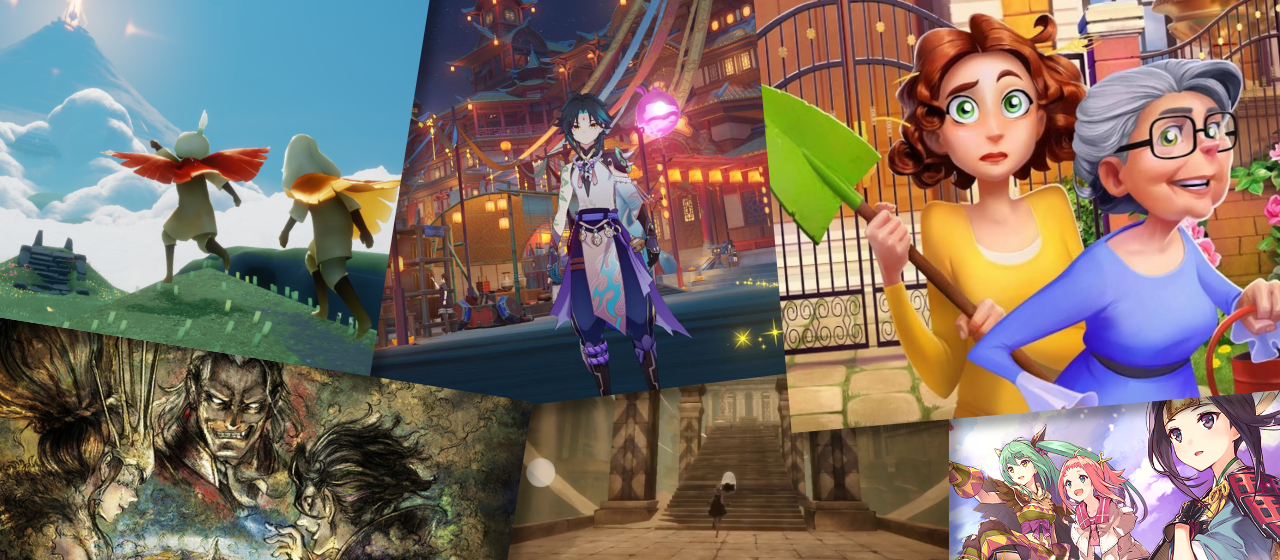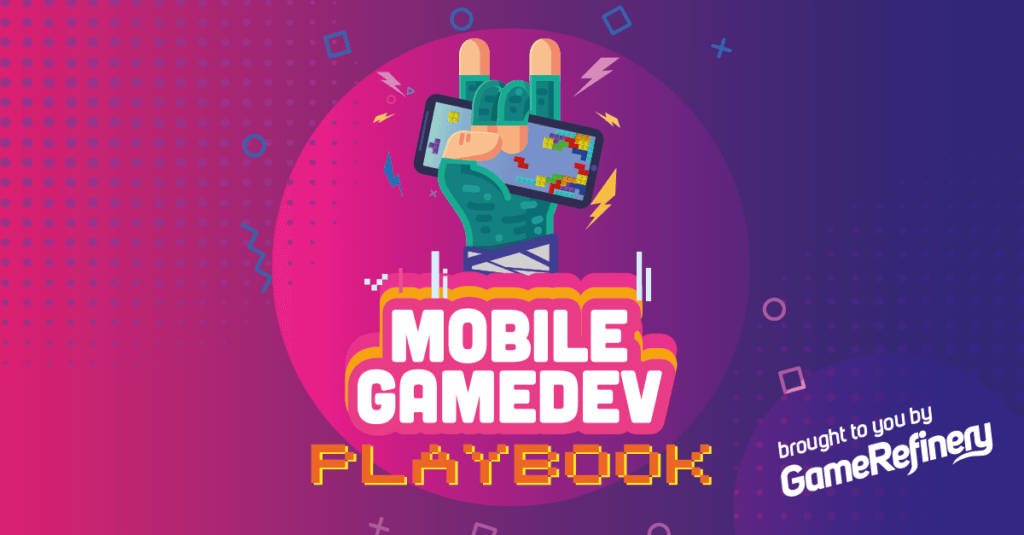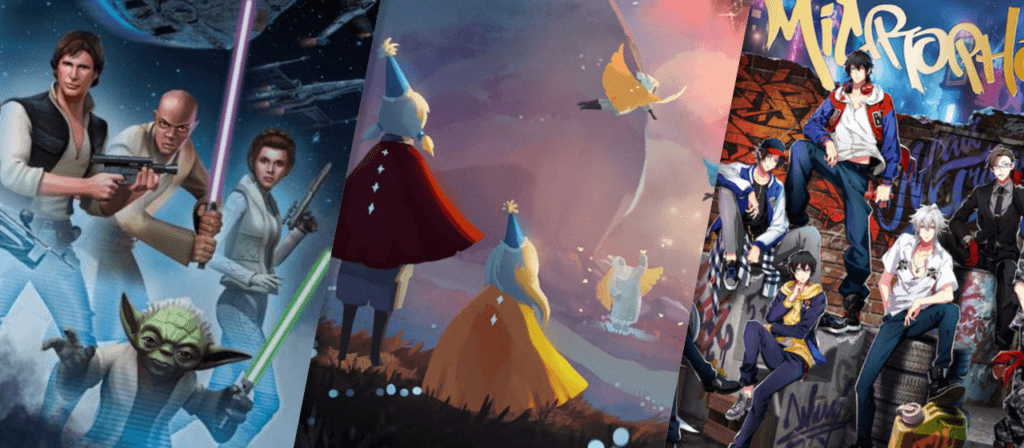The more emotionally invested players are in games, the less critical they become towards the things they want to buy in-game. This is why it’s important that a player is emotionally invested in your game. But how to make a player fall in love with your game? One excellent way is by investing in storytelling.
Falling in love, for example, is very much similar to a good story. Let’s say you’ve seen, read, or watched something and really liked the story and its characters. Suddenly you get an idea that you need to get something similar like the main character, let’s say, a Halloween costume if Halloween were just around the corner. You act on this “impulse” and buy the costume and feel extremely happy. However, after a while, the costume doesn’t really feel the same, and you stop being emotionally invested in that thing because you haven’t engaged with the story in a long time. You’re thinking critically again. In the perfect scenario, a good ongoing gameplay story can create similar feelings as “falling in love” and keep players emotionally invested in the game in the long run as well. This for sure can help game developers, for example, when it comes to players buying stuff in-game. 🙂
Examples of games with great story elements
Genshin Impact
Perhaps not a surprise to see this one in this list as the story and the world-building in the open-world setting is definitely one of the strong suits of Genshin Impact. The beautiful visuals combined with tons of quality voice-acted dialogue and cutscenes make up a very engaging combination. When checking the game’s updates, you can see the effort they also put on the game’s live ops. The storytelling is not left just for the main story, but it is also a crucial part of the game’s events, like the Lunar New Year event. This particular event came with voice-acted questlines, own storyline, event tasks, currency/shop & special characters, etc.
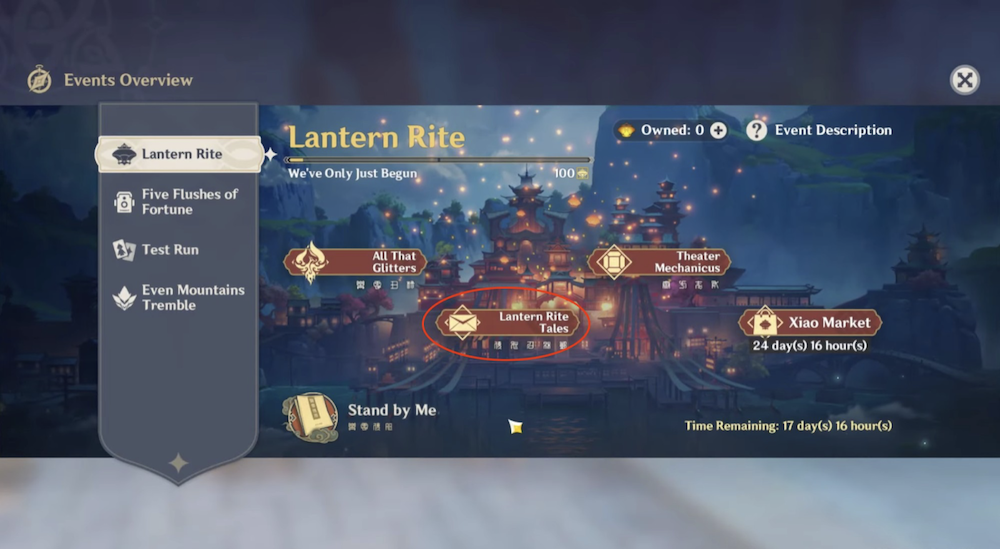
Octopath Traveler – Tairiku no Hasha
This game is at the moment only available in the Japanese market, and our analyst did cover it in detail in this blog post if you’re interested. Now, Octopath Traveler Tairiku no Hasha has 3 main stories. The player can start by choosing one but has the opportunity to access others in the later stage in the nearby cities. What makes this game a bit special story-wise, is that, unlike many other games, it doesn’t allow you to skip the story. This is a planned effort to bring the story to the player. Each character that you get from the gacha has a 4 stage story which often includes battles, and the stories of the characters can link to each other. Now, after you’ve played the 3 main stories mentioned in the beginning, the world will open and you’ll have access to a bigger part of the story which includes more dungeons, cities & big bosses. Each story has its own “Main NPC characters” that drive the story forwards, and your mixed hero set helps them to progress.
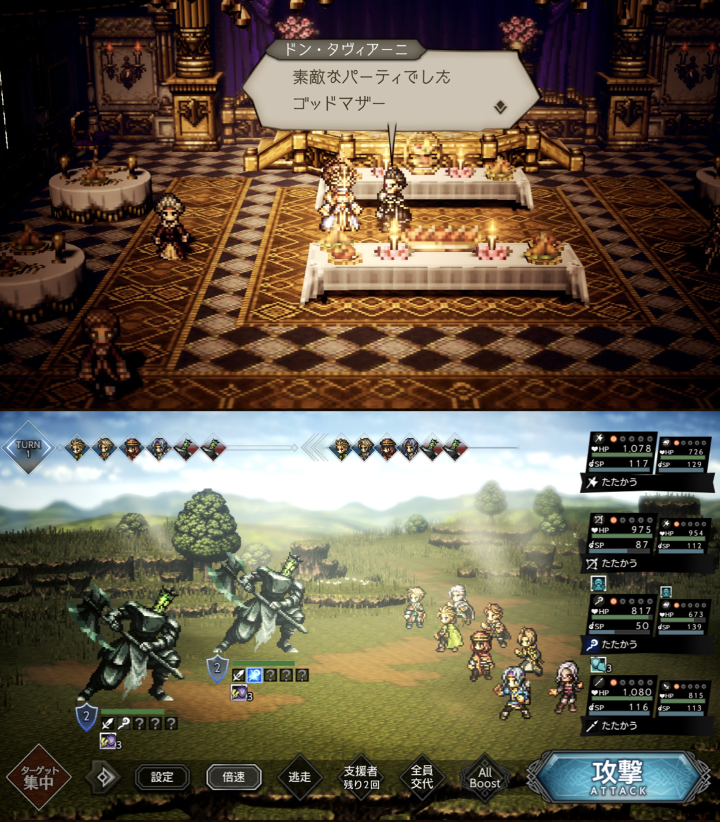
NieR Re[in]carnation
To quote our Japanese market analyst Teemu: “This one is such a beautiful mobile game. An Illusion of exploration in pretty scenes, charming storybook-like narrative bits, gorgeous battle scenes, and a colorful bullet hell minigame”.
In this game, you’re progressing in a linear tower with a little ghost on your side, which opens the history of your character to you. Among the linear exploration, you’re faced with a character whose background is speculated along the journey. During the journey, you’re also collecting weapons and you have to discover the story of them via “fairytale-like” scenes, which also allow you to move freely. During these scenes, there’s always corruption, a black vortex which takes the control of a character or animal and you have to battle versus the monsters.
There’s also an interesting twist, as you start climbing on the rocky and dead tower towards the highest floor, and you reach the top where you’re fighting a boss (and you have a cutscene). After the battle, your main character has changed and you’re now experiencing what happened before “your time”, you’re now running downwards with the different character and your original character runs alongside you. Also, the little ghost on your side has changed.
![NieR Re[in]carnation game story example](https://www.gamerefinery.com/wp-content/uploads/2021/03/nier-reincarnation.png)
Sky: Children of the Light
Sky: Children of the Light is a bit of a different kind of story-based game as it doesn’t have a single bit of dialogue as all the communication is done with gestures. You’re exploring the world and finding Spirits which will teach you different emotes. A part of this process is that you’re able to see what they’ve done in their lives, plus how it’s connected to the emote.
You learn the stories of the spirits as you follow them. For example, you might find a couple that waits outside a closed door in the rain. You then follow them through the rain and find them taking shelter under a big tree. They then move on through the rain to another tree where their final location is. You then learn a “Shivering” emote. The journey of the spirits and the resulting emotes keep the player imagining what the story of these characters is and it ends up being quite captivating. All of this without any written dialogue.
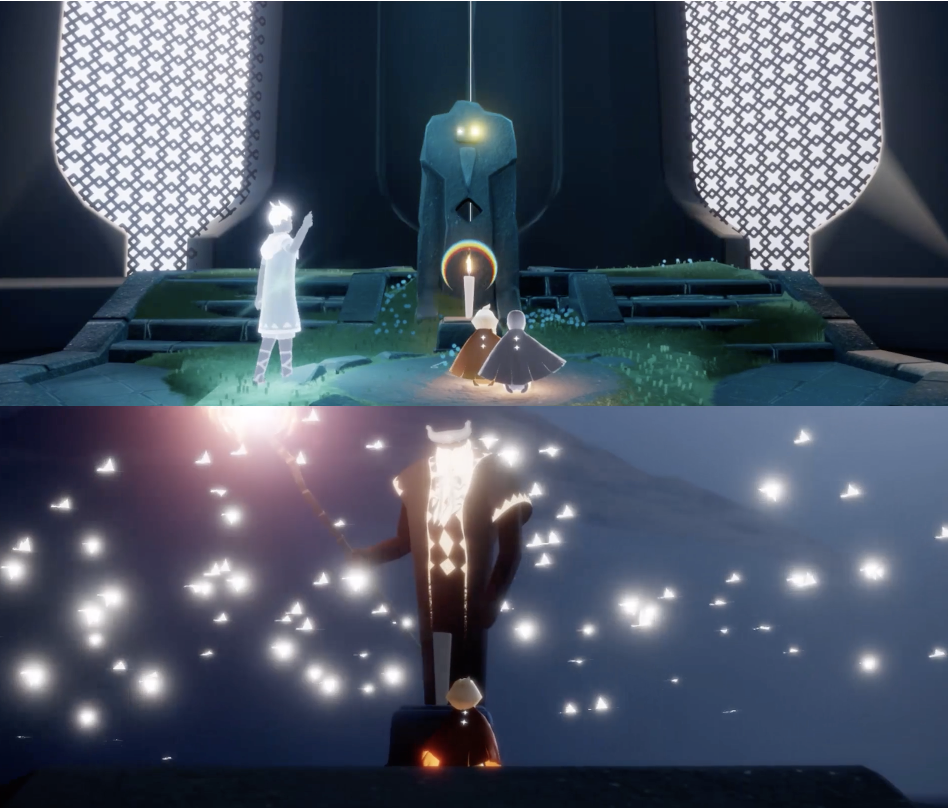
The Alchemist Code
The Alchemist Code (or 誰ガ為のアルケミスト, Taga tame no Alchemist in the Japanese market) has several main characters which keep changing when you progress in the story. For example, in the first chapter, you have knight brothers Logi & Dias, and in the next chapter, you end up in a Steampunk setting with a blond gunslinger Edgar. Jumping to the third chapter, you’re based on a snowy magic school for girls, having the main character Lisbeth with pink hair. In the fourth chapter, the main character is Tina, who is a green-haired archer, and studies strange phenomenons with Lisbeth.
All except the 7 main characters in the game are dead significant figures of the past. You get to experience their tales in different event stories, and in many cases, you witness their death. On top of this experience, you have permanent side storylines, in which you’re experiencing the acts of an ancient order of knights centuries before the main story.
It’s really an interesting game if you’re looking into putting together a puzzle with many smaller stories about the world.
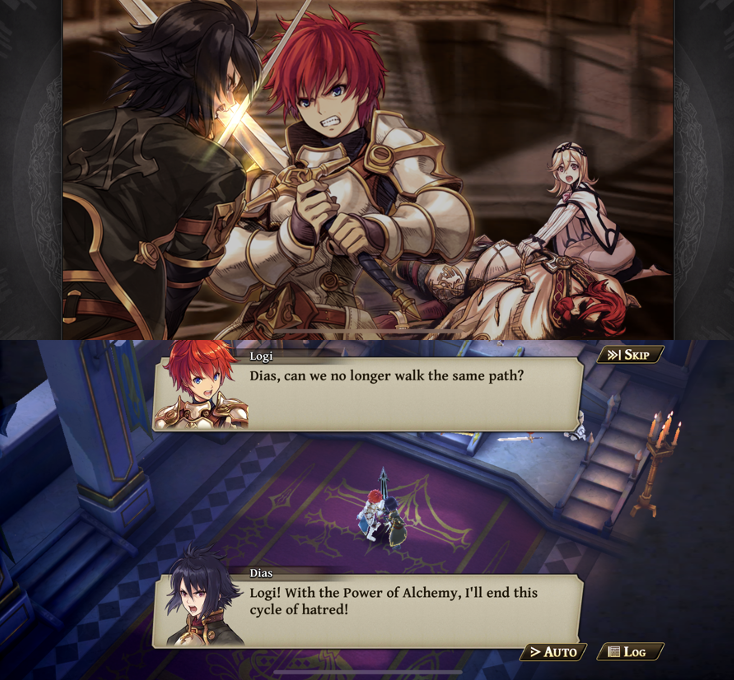
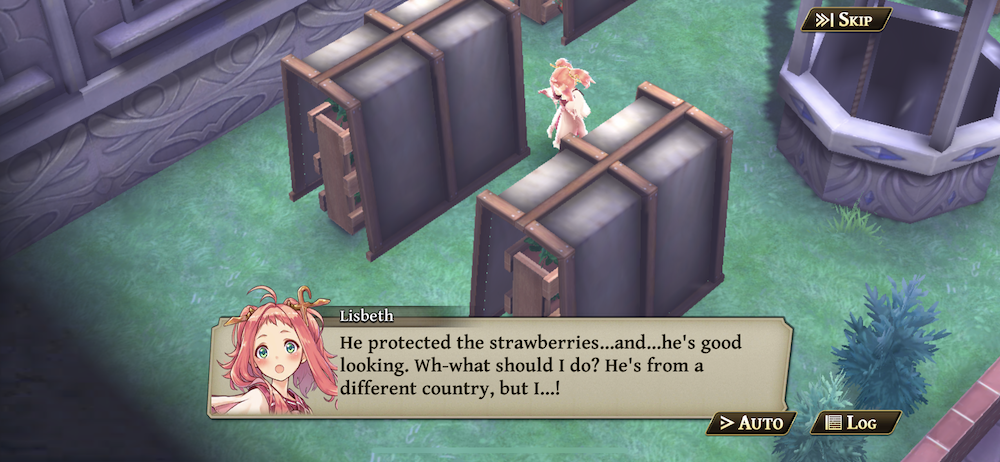
Epic Seven
With heavy continuous storytelling Epic Seven is definitely a very heavily story-driven game with a lot of depth and many cut-scenes (and when you’re still downloading the game, you have the option to read about the characters and of the World). For example, the game begins with a small combat tutorial with a linear story path with dialogues/cut-scenes to hook the player to the story of the game.
The story is very “thick” and you basically always have something where to run in the game that follows the story one way or another and each. The levels contain a story that you follow, and it’s basically an episode which you follow until it ends. There are also a lot of stories that the players can join in, some are up for a limited time and might tell the tale of a new character that has just been introduced; again, the idea is to make a connection to this character and learn more about it. It’s also good to mention that the characters of the game have connections to each other and they can be friendly or hostile, which are tied to the story.
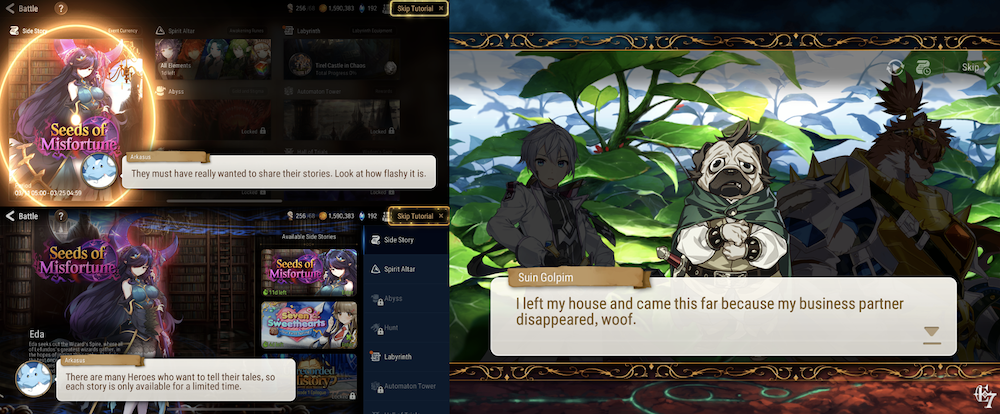
Merge Mansion
While we could discuss games such as Lily’s Garden or Penny & Flo by Tactile (probably the “story masters” in this genre) here, I still wanted to point out something fresh and perhaps not that “well known”. Merge Mansion is a combination of single-level merge gameplay and scapes-style narrative/”renovation” progress. To be more specific, the gameplay loop revolves around completing quests to progress in the storyline, which, in turn, unlocks new areas in the mansion. Admittedly, comparing this game to the ones mentioned above can sound a bit odd, since Merge Mansion’s main focus is not on the narrative. Nevertheless, the story is an important “glue” in the game and it will be interesting to follow how Metacore will develop that aspect in the future.
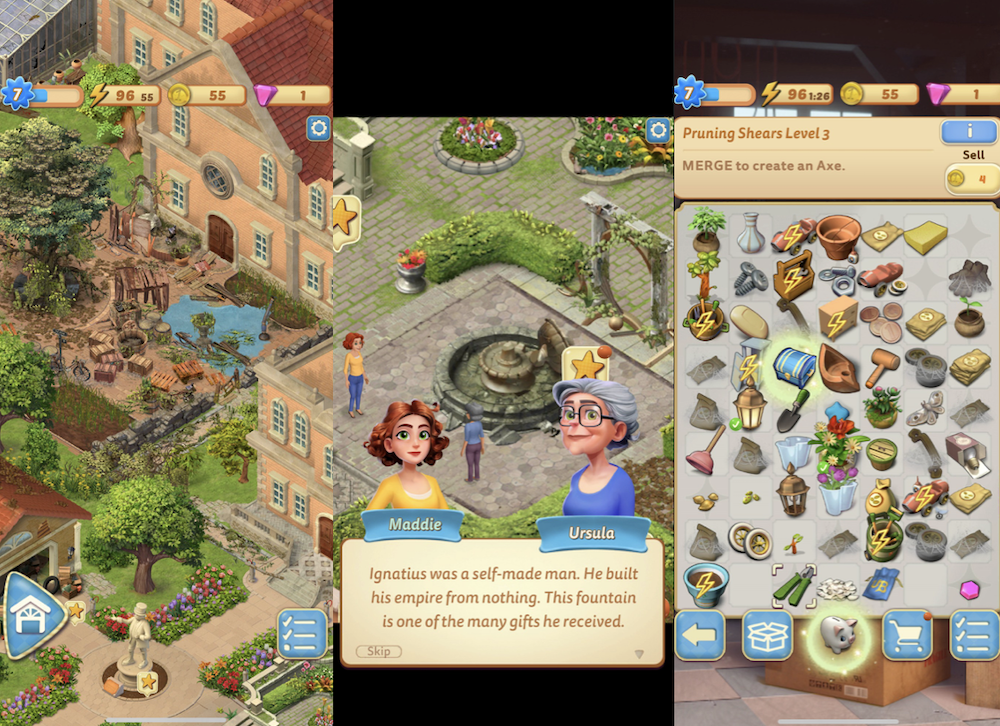
CrossFire Mobile
This one might be a bit odd, a shooter in the story list? And that’s true, it’s a bit odd for sure but this is an interesting example of a top-grossing game with many game modes. One of them is when a player’s decisions affect the story narrative and has been introduced into a “shooting campaign” during a special single-player game mode. In case you didn’t know, CrossFire is also known as the “Asian CS:GO” and it’s the mobile version of the super-popular Chinese FPS franchise,
The main idea is that you’re completing different levels, and the story includes dialogue with women and, of course, shooting. The women join the narrative, and you then have to choose from different options, like what do you think about certain things, after which the story changes a bit. Sometimes the narrative stops, and you’re going to have to continue on a mission. Now, if you survive the mission and complete it, the story will continue, and your relationship level with the NPCs increases. Needless to say that the main point here is to bring more debt to the characters, and the story enhances this.
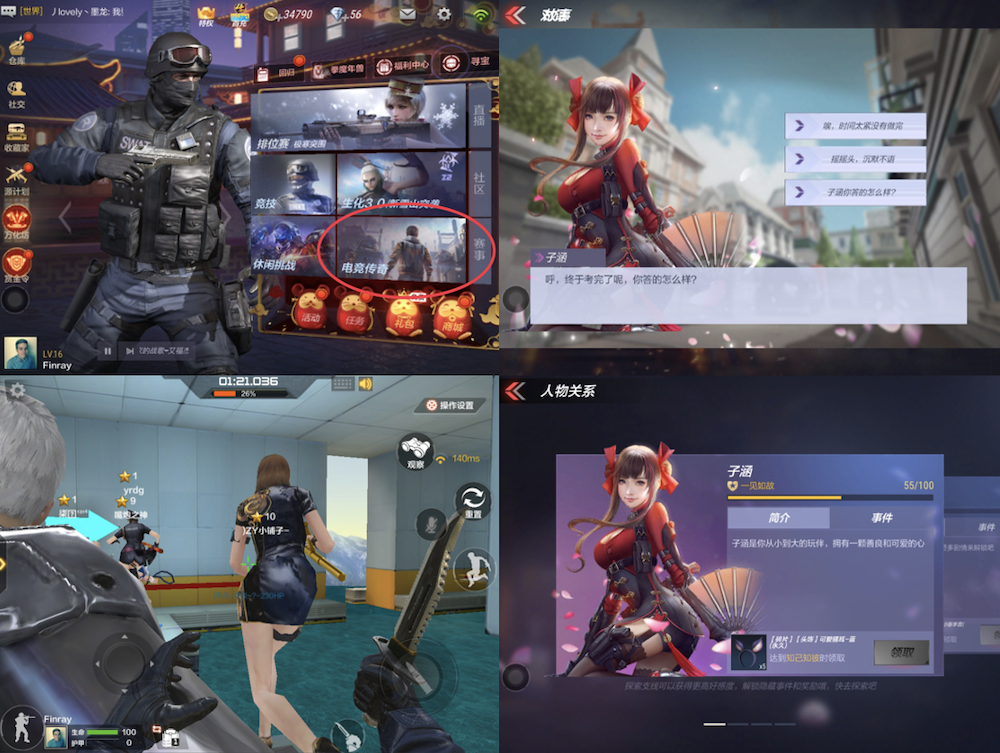
In conclusion
So whether your approach is to use games to tell your story or use stories to enhance your game, the outcome should be the same: emotionally invested player base. This emotionally invested player base is more likely to spend more money and time in your game to enhance a positive and emotionally rich player experience, which will keep them coming back to the game over and over again.
If you enjoyed reading this post, here are a few more you should definitely check out:

